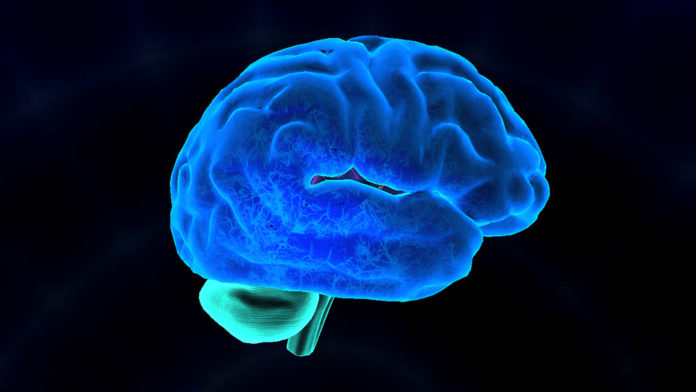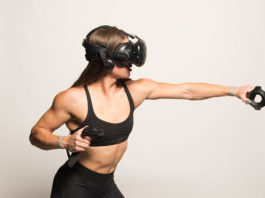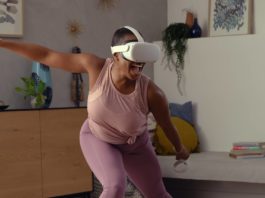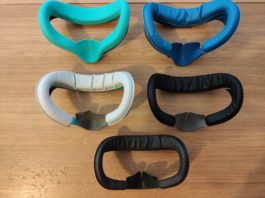We talk a lot about the physical benefits of working out in VR, but there is a strong mental game at work in nearly every major sport. How we interact with a virtual world can boost our brain health, making them moddable like plastic. We can learn new concepts, resolve anxieties, control portion sizes and more using VR games and applications as a method to train our brain. How VR contributes to our mental conditioning has been one of the surprising developments around this new technology.
Here are some of the most exciting ways we’ve found that VR helps.
VR Teaching Parkinson’s Patients Balance
[youtube https://www.youtube.com/watch?v=hocvsEMnWrA&w=560&h=315]
Using a virtual world, researchers from Tel Aviv discovered something incredible: VR is a tool in neuroplastic training. Parkinson’s patients were able to navigate a small obstacle course with decreased instances of falling after training in VR.
This is big news. Neuroplastic training requires a brain that is primed and ready for it. You have to be excited, focused and motivated to achieve the real gains. VR’s immersive qualities have already proven to “trick” the brain into perceiving a virtual world as real. Even if consciously you know the difference, our brains are ready and willing to accept virtual worlds as the real thing.
VR also uses a lot of the repetitive motions necessary to achieve neuroplasticity. Basically, our brains strengthen connections that are utilized over and over again, the opposite of wear and tear. The future of brain health and fitness may utilize clever level design to have us practice important motions and thought processes we need as we get older.
Stanford Uses VR to Improve Reactions
[youtube https://www.youtube.com/watch?v=0XKxvKEFBps&w=560&h=315]
Strivr has paired with Stanford University to give coaches greater insight into what athletes are doing on the field. Using actual video gathered from practice play, coaches can walk players through a scenario second by second, monitoring where a player’s eyes are focusing. This can teach coaches how playmakers think, what they look for and how quickly they acquire a target. It can also inform other positions about how they are perceived on the field.
The next generation of coaches will use a combination of VR and AR, coupled with machine-assisted learning, to give greater insight into what’s happening on the field. At the consumer level, we already see this in action. MLB apps allow fans to look at a player’s statistics and see batting averages and more at a glance.
VR Meditation for PTSD
The trouble with PTSD therapy for veterans has a lot to do with stigmas. Veterans who seek treatment report a higher instance of being passed over for promotions or even finding work. There can be a stigma of seeking treatment in a culture that emphasizes self-reliance and toughness.
Through virtual exposure therapy, patients can relive the traumas that trigger PTSD. In one example, victims of the 9/11 attacks can find some closure through reliving the trauma, robbing the horrific events of their power to mentally harm us. Using virtual sights, coupled with incredible sound design, therapists can provide a realistic experience that helps to overcome traumatic experiences even beyond war.
VR Helps with Pain Management
In the United States, patients in nearly every state wrestle with some form of addiction to painkillers or prescription drugs. These drugs are prescribed to try and ease the pain that comes with surgeries, aging and wear on our bodies over time. Those who lived a life of physical labor seemingly pay the price double when they find themselves addicted to the pills that help alleviate their symptoms.
Samsung has teamed up with researchers to try their hand at managing painful symptoms without the use of painkillers. VR therapy takes one of a few different forms:
- Tilt Brush is similar to art therapy, allowing patients to move in a virtual space while creating three-dimensional imagery.
- Relax VR is a meditation app that teaches corporate executives to cope with the stressors of a high-pressure job.
These relaxing scenarios can help ease the brain and body, making painful recovery easier without falling back on pain medications. Early results suggest a very real potential for reduction in painkiller usage.
The Potential of the Mind
VR constantly surprises me because of our mind’s ability to accept immersion. We can consciously recognize a simulation but process the realities of that world as though it was our own. Many who use VR describe overwhelming sensations when removing headsets and immersing themselves back into the real world.
As VR evolves and harnesses more of the mind’s true potential, we’ll begin to see more breakthrough studies that look at the mind’s power to learn from virtual worlds.





Comments are closed.